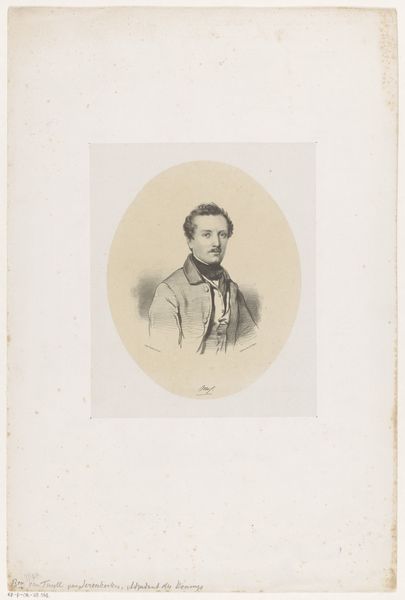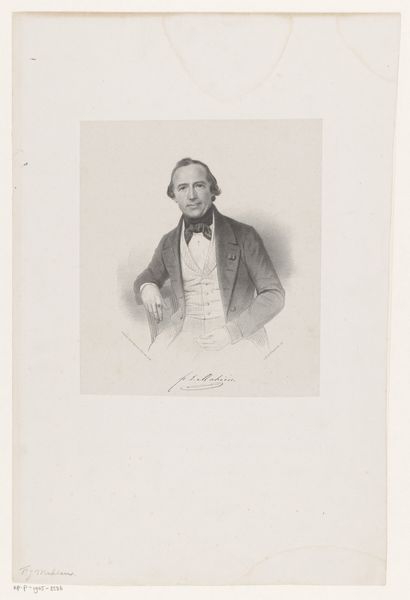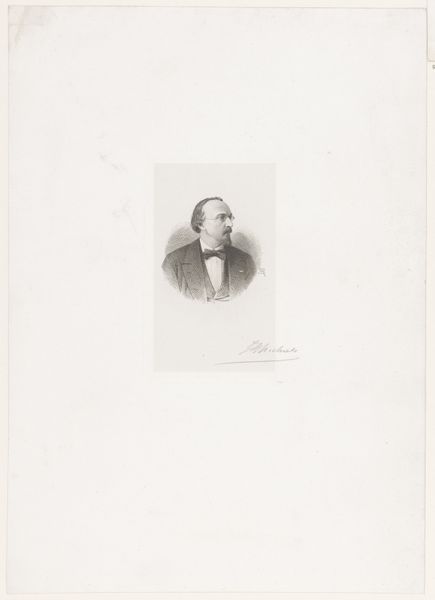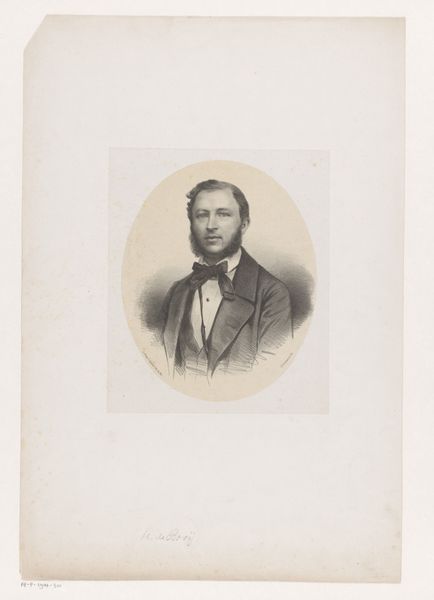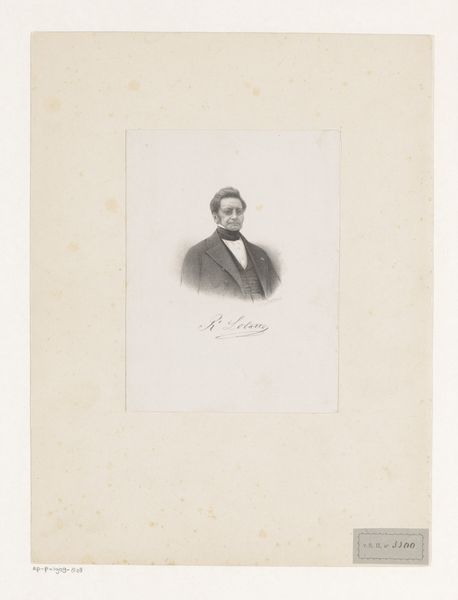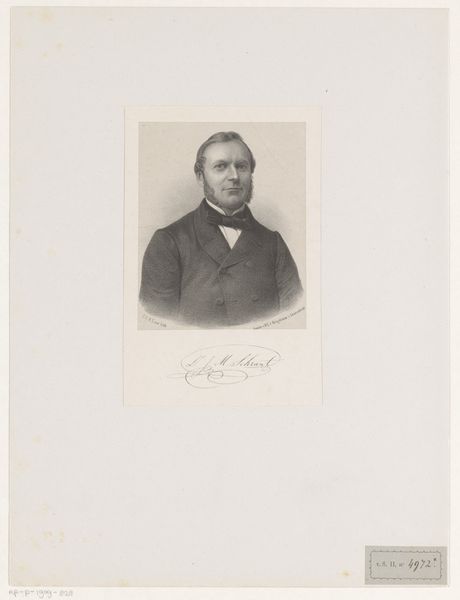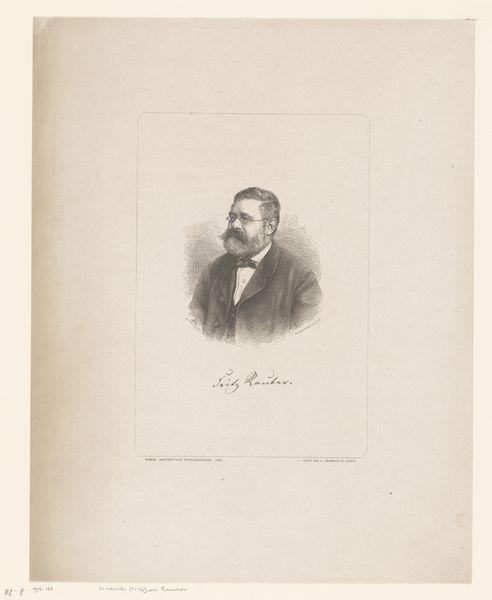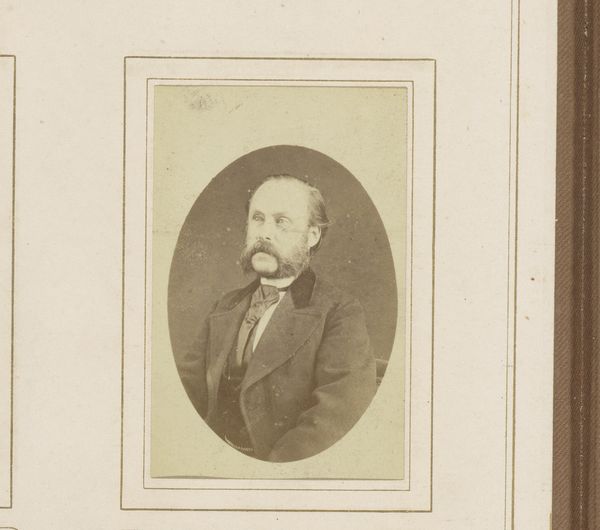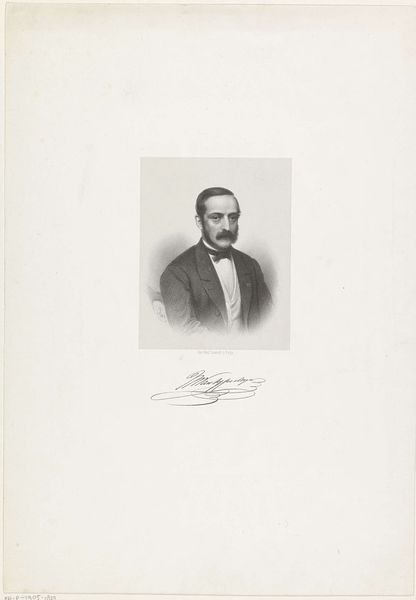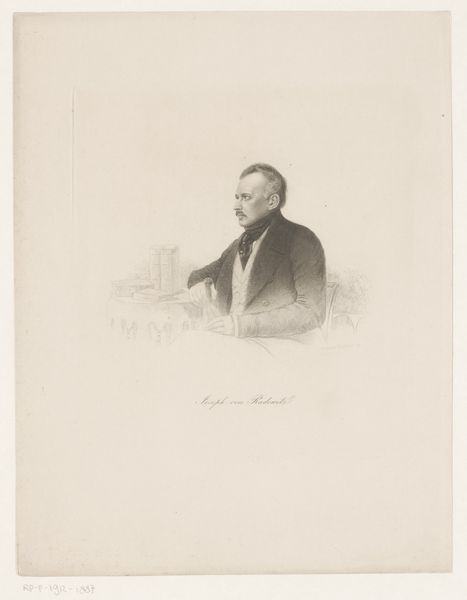
Dimensions: height 563 mm, width 450 mm
Copyright: Rijks Museum: Open Domain
This portrait of Johannes Peter Müller was made by Paul Rohrbach, using lithography, a printing process that democratized image-making in the 19th century. The texture is subtly modulated, made by transferring an image from stone or metal to paper using oil-based inks. The resulting print has a soft, almost velvety quality, capturing the nuances of light and shadow in Müller's face and clothing. Lithography allowed for the relatively quick reproduction of images, making art more accessible and affordable than traditional painting or engraving. The process involved skilled labor, from the artist creating the original image to the technicians preparing the printing surface and running the press. This print reflects the changing landscape of art production in the industrial era, where new technologies transformed the relationship between artist, artwork, and audience. Considering the materials, making, and social context allows us to appreciate not only the artistic skill involved but also the broader cultural and economic forces shaping its creation.
Comments
No comments
Be the first to comment and join the conversation on the ultimate creative platform.

